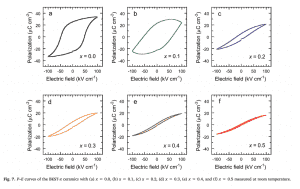
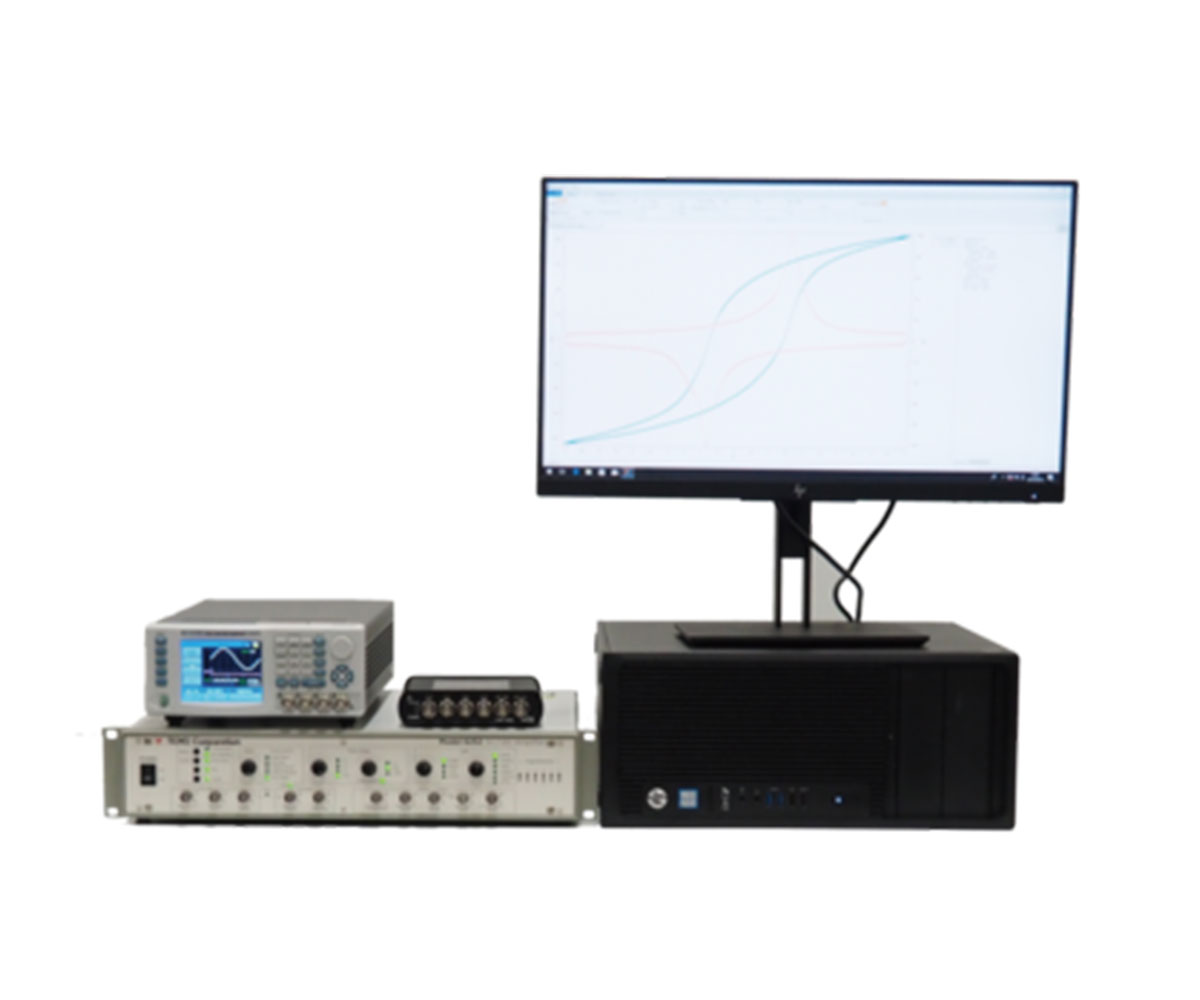
Japan Toyo Technica High Frequency Low Noise Ferroelectric Evaluation System*
Ferroelectric material testing system
Ferroelectric Material Testing System
The FCE10 series updates the hardware and software of conventional ferroelectric characterization systems.
- Support the highest frequency of 1MHz (FCE10-F type)
- New measurement function "Triangular wave double pulse measurement" is realized
- Support remote control
Highly scalable systems can be configured with various options such as voltage extension, displacement meters, probing, and environmental changes such as temperature and atmosphere.
[System Introduction]
When a material needs to be industrialized, we must grasp most of its properties as widely as possible and with high precision, so as not to affect the direction of industrialization at a later stage due to wrong data and cause unnecessary losses.
The FCE series is an original evaluation system for various ferroelectric, pyroelectric and dielectric materials developed by Toyo Teknika Co. With the new VG architecture and QV/IV dual sensor design, the system is able to accurately detect small charge changes such as thin film or nanoparticle materials.
The test equipment series has been sold in Japan for more than 20 years and has been approved by many leading material research institutes in Japan.
[System Features]
Powerful hardware and software combination, high speed low noise measurement system with maximum delta frequency of 1MHz - High speed model: ~1MHz - Standard model: ~10kHz - Basic model: ~1kHz
Comprehensive test functions - Hysteresis return measurement - Triangular wave double pulse measurement - Leakage current measurement - Fatigue measurement - Saturation characteristics measurement - Automatic measurement scripts - PUND measurement
General peripherals and functions - Remote control options - Remote control of temperature - Voltage amplification function: ±100V to ±10kV - External AFM/various deformation measurement units - Magneto-optical Kerr imaging for electromagnetic systems / Multi Ferrous related options
VG architecture with QV/IV dual sensor design - extremely low noise floor - simultaneous QV/IV sensors for direct measurements without lossy Q-I conversion
[Optional Accessories]
AFM/various external deformation measurement units
- Can be used with various deformation measurement instruments to measure the piezoelectric properties of samples, d33, etc.
Voltage amplification function
- ±100V~±10kV with special protection against QV/IV detector damage
Electromagnetic system magneto-optical Kerr imaging / multiferroic correlation options
- The polarization of multiferroic materials under a magnetic field is measured by applying a magnetic field.
- The magnetization phenomenon of multiferroic materials under electric field is measured by applying electric field.
e31 Options
- Measurement of e31 for thin film type materials
[System Specifications]
| High-speed model | Standard model | Basic model | |
|---|---|---|---|
| Model | FCE10-F | FCE10-S | FCE10-B |
| Apply waveform | |||
| Triangular wave frequency | ~1MHz | ~10kHz | ~1kHz |
| Minimum pulse width | 200ns | 5μsec | × |
| Maximum applied voltage (standard) | ±10V | ~±10V | ~±10V |
| Maximum applied voltage (optional) | ±100V | ~±10kV | ~±10kV |
| Measurement Functions | |||
| Hysteresis return line measurement | ○ | ○ | ○ |
| Leakage current measurement | ○ | ○ | × |
| PUND pulse splitting measurement | ○ | ○ | × |
| Pulsed triangular wave split-pole measurement | ○ | ○ | × |
| Automatic scripting function | ○ | ○ | × |
| Deformation measurement | ○※1 | ○※1 | ○※1 |
| Remote Control | △*2 | △*2 | △*2 |
| ※1 Additional deformation measuring instrument required | |||
| ※2 △ is an optional item |
[Test Legend]
Hysteresis measurement
Hysteresis measurement is a measurement method (measurement mode) in which a triangular or sinusoidal voltage is applied to the sample and the polarization is observed as the response. Although it is the most basic measurement method, various parameters such as capacitance and coercivity electric field can be known.
Typically, the measured data are plotted as polarization (P) or charge (Q) on the vertical axis and electric field (E) or applied voltage (V) on the horizontal axis, and the curves are displayed in a form called hysteresis.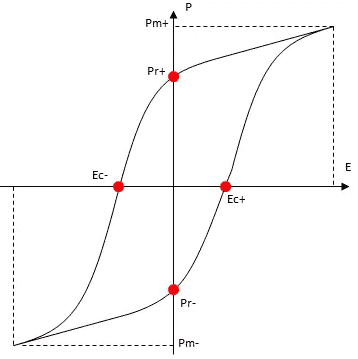
Leakage current measurement
Leakage current measurement is a measurement method in which a stepped voltage waveform is applied and the response current at each voltage is observed. It is mainly used to study the voltage dependence of ferroelectric leakage currents.
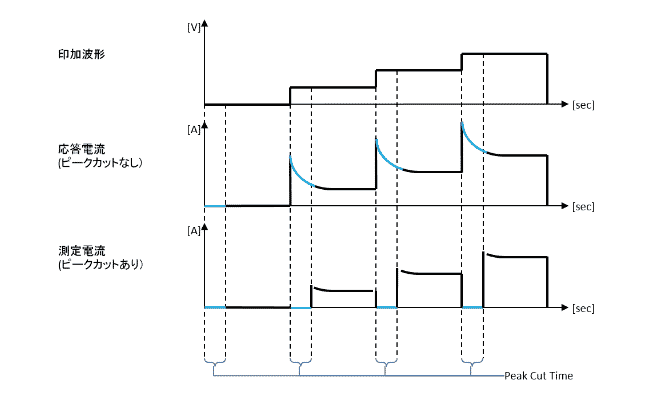
PUND pulse polarization measurement
The PUND pulse polarization measurement applies two positive pulses and two negative pulses. (Negative pulses may be applied first for polarization.)
Parameters such as reversed/non-reversed charge (polarization) and residual charge (polarization) of ferroelectrics in the measurement results of double pulse measurements.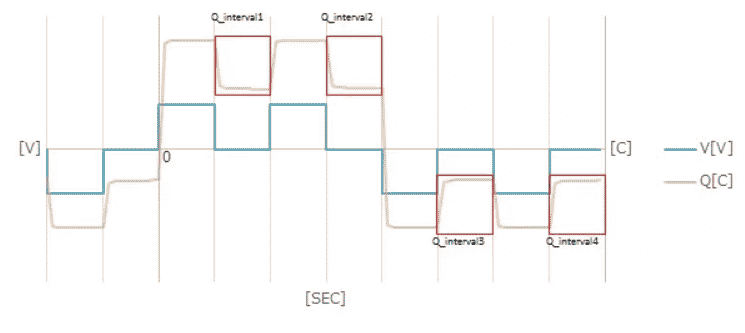
Triangular double pulse measurement
The triangular double pulse measurement applies two positive and two negative triangular pulses and measures their response charges.
By subtracting the response charge from the first triangular wave pulse from the response charge from the second triangular wave pulse, the hysteresis characteristics with reduced effects such as leakage current can be obtained.
A negative delta wave pulse can also be applied first for the polarization process.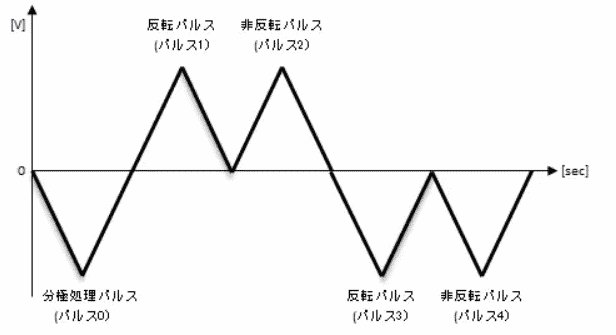
Fatigue measurement
In fatigue measurements, the fatigue waveform is repeatedly applied for a specified time or number of times, and then a specified sequence of measurements is performed.
You can observe the change in eigenvalues due to the application of the fatigue waveform.
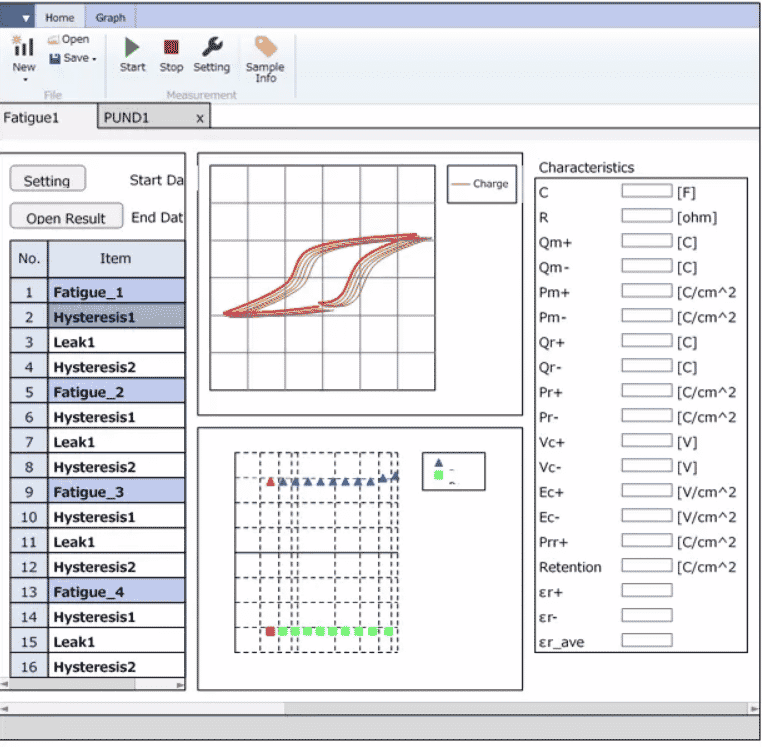
Sequence functions
The Sequence function is a function that can automatically perform continuous measurements by combining each of the above measurements.
For example, hysteresis measurements of multiple frequencies can be performed as a single measurement sequence, or a specified fatigue waveform can be applied between each measurement.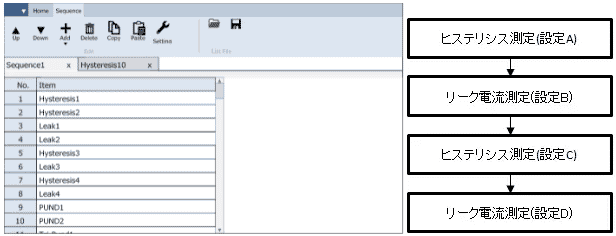
Related Applications



